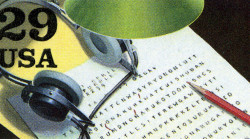Tracie Spinale
Learning Programs Manager
Smithsonian Institution
Middle School (13 to 15 years old), High School (16 to 18 years old), Post-Secondary
Teacher/Educator, Curriculum Coordinator, Parent, Museum Staff
Language Arts And English, Science, Social Studies, Arts, Special Education, Career and Tech Ed, Other
: Museum Studies
Hi there! I am Learning Programs Manager at the Office of the Under Secretary for Education (OUSE) where I focus on positive youth develop programs
Enjoy!
- Positive Youth Development
- 4-H & 4-H Guide to the Smithsonian booklet
- Boys & Girls Clubs of America
- All Access Digital Arts Program - Collections for teens and youth with cognitive differences
- Distance Learning Resources
- A cultural science series from the Smithsonian Arctic Studies Center in Alaska (#arcticstudies)
- Maker and activity collections about environmental and social justice issues
- Topical collections
- A series on the intersection of Buddhism and Western Science
Tracie Spinale's collections
Access Series: Nostalgic Popular "Pop" Culture
<p>This inspiration collection of nostalgic popular "pop" culture from the 1950s, 1960s, 1970s, 1980s, 1990s and 2000s—super heroes and super villains, Muppets, cartoon characters, Star Wars, Disney and Pixar characters, Transformers, and movies was used for a collage activity and discussion prompt in an informal learning activity, "Me & My World: Personal Ecology/Interest Inventory" with a group of teens with cognitive and intellectual disabilities. Students were asked about their favorite pop culture influences from the past and present. <br></p>
<p>Use one of the activity prompts to spark discussion.</p>
<p>Tags: decision-making, self-determination, student empowerment, disability, All Access Digital Arts Program, teens in museums, teens, teenagers, after school, out of school learning, informal learning</p>
 Tracie Spinale
Tracie Spinale
83
"Think Different": Steve Jobs
<p>What does it mean to be influenced by the world around you? This collection looks at the technical innovations, design influences (Japanese Zen Buddhist, Italian, Bauhaus); location influences (Yosemite, Silicon Valley); and cultural and musical influences (Bob Dylan, Edwin Land) which inspired Steve Jobs to "think different" and create digital products which changed the world.<br></p><p>Today, owning an iPhone is almost ubiquitous--seamlessly integrated into our modern lives. I'm typing on a MacBook Pro as I write this metadata note. But, I'll always remember the feeling of excitement as a kid--my first personal computer, an Apple //c. (1984). I spent hours, upon hours on it, exploring a strange and wonderful new world; and years later, a Macintosh followed, that took me to college. I remember wearing earbuds for the first time, and listening to my personal music collection on my first iPod Gen 4 (2004). Besides being a seminal technology influence in my life, I was inspired to create this collection about Steve Jobs after creating a family day program at the Smithsonian based on the <em><a href="https://www.si.edu/Exhibitions/The-Patents-and-Trademarks-of-Steve-Jobs-Art-and-Technology-that-Changed-the-World-4838" target="_blank">Patents and Trademarks of Steve Job</a></em> traveling exhibition (2012). I hope the story of Jobs and Apple inspires the next generation to think different and change the world through technology.</p>
<p>Keywords: inventor, biography, technology, innovation</p>
 Tracie Spinale
Tracie Spinale
42
Ciphers and Codes
<p>Throughout history, ciphers and secret codes were devised to keep intelligence from falling into the wrong hands. From the WWII German "Enigma" machine, to America's Cherokee Code Talkers, people used ciphers and codes to safeguard secrets. One of my favorite mysterious artworks is the sculpture <em>Antipodes,</em> outside of the Hirshhorn Museum. No one knows what it means, and its companion piece <em>Kryptos</em> is at Langley. Use this collection an inspiration piece for puzzle lovers and mystery solvers both young and old. There are many free sites on the web that you can use to create your own coded messages like, "Jsotd ymj Qjfwsnsl Qfg!" (Hint: Caesarian Shift).</p>
 Tracie Spinale
Tracie Spinale
25
Color Series: Pink
<p>This topical collection of the color pink is part of a color series and was originally used in a collage art activity (printed out; using paper, glue, and art materials) with a group of teens with cognitive disabilities during a summer camp program. </p>
<p>Tags: color series, decision-making, self-determination, student empowerment, disability, All Access Digital Arts Program</p>
 Tracie Spinale
Tracie Spinale
30
Senses Series - Hearing
<p>How do we hear what we hear? This collection is about hearing the world in unexpected ways through human perspectives of science and culture, and animal adaptations. Meet a shark whose entire body is an ear; zoo otters who play the keyboard; rabbits whose large ear adaptations provide self-defense; and the reasons for a sea lion's bark. Learn about the structure and function of human ears can only see a certain type of light within the electromagnetic spectrum. Background information from the website Neuroscience for Kids provides an overview of how the ear and hearing functions work, as well as a sound experiments to try. The collections closes with a cross-cultural examination of hearing and function from Tibetan Buddhist monastics.<br /><br />Based on exhibition project work through <a href="http://scienceformonks.org/">Science for Monks</a> and <a href="http://scienceformonks.org/world-of-your-senses-web-tour/" target="_blank">The World of Your Senses</a> Exhibition (2010).</p>
 Tracie Spinale
Tracie Spinale
10
Color Series - Green
<p>This topical collection of the color green is part of a color series and was originally used in a collage art activity (printed out; using paper, glue, and art materials) with a group of teens with cognitive disabilities during a summer camp program. I was inspired to create the series after a few of our students mentioned their passionate interest in specific colors, and how they thought in colors.</p>
<p>Tags: color series, decision-making, self-determination, student empowerment, disability, All Access Digital Arts Program</p>
 Tracie Spinale
Tracie Spinale
30
Lesson Plans - All Access Digital Arts Club: Activities + Plans for Neurodiverse Teens
<p>The Smithsonian Office of Educational Technology's All Access Digital Arts Program (2012-2016) provided skill-building opportunities in digital arts and communications, creative expression, and social inclusion to a spectrum of teen learners in the Washington, DC metro area. Participating youth visited Smithsonian science, history, and art museums, created digital and physical artworks based upon a tailored curriculum, engaged in social interactions online and in-person, gained digital literacy skills, and developed friendships with other teens.
Through once-per-month club outreach activities and summer intensive camps and workshops, students were exposed to communication, collaborative learning, research, and problem solving. The program served up to 20 youth per session, ages 14 through 22 with cognitive and intellectual disabilities. The youth experienced skill building, leadership opportunities, and social integration through Smithsonian resources, socialization opportunities, and computer skills. Youth participated in 1.) One- and two-week multi-media digital arts workshops whose outcome was student-produced artworks, songs, and movies that were shared with family and friends at openings and online via a social network; and 2.) Club activities--to build upon skills developed during the summer, and maintain social connections. </p>
<p>All Access Club activities were offered to alumni of the summer workshops, and were held once monthly on Saturdays during the year to build upon skills developed during the workshop, and maintain social connections. During the club, teens practiced social skills through guided activities and Smithsonian museum visits, and produced original digital and hands-on art projects at the Hirshhorn ARTLAB+. Educators led the group in a series of planned educational activities related to the day’s theme—such as “the universe” or “oceans”. Volunteers assisted club members to use social media, tablets, cameras and laptops to facilitate the digital experience. The activities and resources promoted digital literacy skills, and can motivate families to visit museums to learn, and for teens to build self-esteem. An evaluation session on the final day allowed teens to express their thoughts to the club organizers.</p>
<p>Special thanks to colleague Joshua P. Taylor, M.Ed., VCU Autism Center for Excellence, Virginia Commonwealth University</p>
<p>Keywords: access, disability, accessibility, neurodiversity, special education, SPED, out of school learning, informal learning, cognitive, social skills, engagement, passion, creativity, empowerment, self-determination, teens in museums, teens, teenagers, after school, out of school learning, informal learning<br></p>
 Tracie Spinale
Tracie Spinale
19













